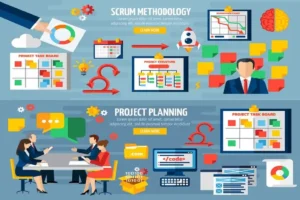Remote Access with AnyDesk: Exploring Abrams’ Guide on BleepingComputer
Introduction
Remote desktop software has become an essential tool in today’s digital age, enabling seamless access to devices from anywhere in the world. Among the many options available, AnyDesk stands out for its speed, simplicity, and robust security. For those navigating the complexities of remote access tools, BleepingComputer, a trusted tech resource, provides invaluable insights—and Lawrence Abrams, a key contributor to the platform, has offered guidance on leveraging AnyDesk effectively. This article delves into the features of AnyDesk, key takeaways from Abrams’ guide, and best practices for secure and efficient remote access.
What is AnyDesk?
AnyDesk is a lightweight remote desktop application designed for quick and reliable connections between devices. Whether you’re a professional needing to access office systems remotely or a tech enthusiast assisting a friend, AnyDesk’s versatility makes it an attractive choice.
Key Features of AnyDesk:
- High Performance: AnyDesk is optimized for speed, even on low-bandwidth connections, ensuring smooth remote control with minimal lag.
- Cross-Platform Compatibility: It works seamlessly across operating systems, including Windows, macOS, Linux, Android, and iOS.
- Security First: The software uses military-grade encryption and customizable access permissions to protect user data.
- Lightweight Installation: With a file size under 4MB, AnyDesk is quick to download and install, making it ideal for users on the go.
Compared to other remote desktop tools such as TeamViewer and LogMeIn, AnyDesk is known for its affordability and user-friendly interface, which has made it increasingly popular among individuals and businesses alike.
Key Insights from Abrams’ Guide on BleepingComputer
Lawrence Abrams, the founder and editor of BleepingComputer, has a wealth of experience in cybersecurity and software analysis. His guide on AnyDesk offers practical advice and troubleshooting tips that make the software easier to use and more secure. Below are some of the key takeaways from his insights:
1. Getting Started with AnyDesk
Abrams emphasizes the simplicity of setting up AnyDesk. Users can download the application from the official website, install it on their devices, and begin connecting within minutes. He advises ensuring that the software is downloaded only from verified sources to avoid malicious imitations.
2. Optimizing Performance
One of the standout tips in Abrams’ guide is optimizing AnyDesk’s performance for specific use cases. For example:
- Adjusting Quality Settings: Users can tweak display settings to prioritize speed over quality on slower connections.
- Efficient File Transfers: The built-in file transfer feature allows users to move files between devices without needing third-party software.
3. Ensuring Security
Security is a recurring theme in Abrams’ writing. His guide stresses the importance of activating features such as two-factor authentication (2FA) and limiting session permissions to enhance protection against unauthorized access. Abrams also recommends:
- Enabling the “Interactive Access” setting to control who can request access.
- Using a strong password to secure AnyDesk sessions.
4. Troubleshooting Common Issues
Abrams’ guide addresses frequent user concerns, such as connection failures and lag. He suggests checking firewall settings, ensuring the AnyDesk client is up to date, and verifying network stability as first steps in resolving these issues.
Security Concerns and Precautions
While AnyDesk is designed with security in mind, like any remote desktop tool, it’s not immune to misuse. Abrams’ guide highlights potential risks and offers actionable tips to mitigate them.
Common Security Risks:
- Phishing Scams: Cybercriminals may trick users into granting access to their devices under false pretenses.
- Unprotected Sessions: Leaving a session open or using weak passwords can expose sensitive information.
Best Practices for Safe Remote Access:
- Enable Session Logs: This feature helps track who accessed your device and what actions were taken.
- Set Up Whitelisting: Restrict access to known, trusted devices.
- Be Cautious with Unknown Requests: Always verify the identity of anyone requesting remote access before granting permission.
Abrams also underscores the importance of staying informed about the latest security updates and patches for AnyDesk.
Practical Applications of AnyDesk
AnyDesk’s versatility makes it suitable for a wide range of applications, from professional environments to personal use. Below are some examples:
For Businesses:
- IT Support: IT teams can diagnose and resolve issues on employee devices remotely, saving time and resources.
- Remote Collaboration: Teams can share screens and work together on projects in real-time, regardless of location.
- Customer Service: Companies can assist customers by remotely accessing their systems to provide hands-on guidance.
For Individuals:
- Home Office Access: Users can access files and applications on their work computers from home.
- Assisting Family Members: AnyDesk allows tech-savvy users to help less experienced family members troubleshoot device issues.
- Gaming and Entertainment: Gamers can access their systems remotely to play or stream content.
Real-world examples abound, from IT professionals streamlining support processes to freelancers working across continents without missing a beat.
Comparisons and Alternatives
In his analysis, Abrams often compares AnyDesk with its competitors, highlighting its strengths and identifying scenarios where alternatives may be more suitable.
Strengths of AnyDesk:
- Lightweight and fast, even on slow networks.
- Competitive pricing plans for individuals and enterprises.
- High-quality video and audio streaming for remote presentations.
Popular Alternatives:
- TeamViewer: Known for its comprehensive feature set but often criticized for its high pricing.
- LogMeIn: Offers advanced functionalities but is geared more toward enterprise users.
- Chrome Remote Desktop: A free, browser-based option that’s easy to use but lacks advanced features.
Abrams’ guide suggests evaluating specific needs before choosing a remote desktop tool, as each has unique strengths and weaknesses.
FAQs and Common Issues Addressed by Abrams
Abrams’ guide also includes a section dedicated to frequently asked questions and troubleshooting tips. Below are some examples:
Common FAQs:
- Is AnyDesk free?
- Yes, for personal use. However, businesses need to purchase a license.
- Can AnyDesk work offline?
- No, an internet connection is required for remote access.
- Is it safe to use AnyDesk?
- Yes, provided you follow security best practices such as enabling encryption and 2FA.
Troubleshooting Tips:
- Connection Issues: Ensure your firewall isn’t blocking AnyDesk’s connection. Restarting the software often resolves minor glitches.
- Performance Lag: Lower display resolution or disable background processes to improve performance.
- Unauthorized Access: Regularly review access permissions and revoke any suspicious connections.
Conclusion
AnyDesk has established itself as a reliable, efficient, and secure remote desktop solution, offering a wide range of features to cater to both personal and professional needs. Lawrence Abrams’ guide on BleepingComputer provides users with the knowledge and tools to make the most of this software while staying safe from potential risks. By following his tips and best practices, users can harness the full potential of AnyDesk to work smarter and more securely.
For anyone seeking a comprehensive, easy-to-use remote access tool, AnyDesk is a compelling choice—and with Abrams’ guidance, navigating its features becomes even easier. So whether you’re troubleshooting, collaborating, or simply accessing your files remotely, AnyDesk is ready to connect you to what matters most. See More New Trend Blogs











